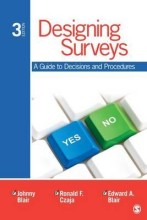C5: Family relationships
14 important questions on C5: Family relationships
From the definition of the family, what are five characteristics?
2. Primary unit of affiliation for people
3. Long term potential existence
4. Functions as an economic unit
5. May have child rearing responsibilities
What says the family system theory?
What are the two key principles of family system theory?
2. Disequilibrium: change in one person, or in one subsystem causes disequilbrium.
- Higher grades + faster learning
- Never study anything twice
- 100% sure, 100% understanding
What does 'dynamic aspects of families' mean?
What are three theories about changse in parent-child relation?
2. Cognitive development theories
3. Expectation violation realingment model
What are two psychoanalytic theories about change in parent-child relationship?
2. Autonomy-relatedness perspective: important to develop autonomy, but you can absolutely do in within the relationship with your parents.
What does the cognitive development theories say about changes in parent-child relationship?
What says the expectation-violation-realignment theory about changes in parent-child relationships?
What have al three theories about changes in parent-child relationships in common?
What are two changes in the parent-child relationship in adolescence?
2. Change in relationship characteristics:
- conflict, support, dominance
- monitoring and information management
What are the most frequent topics of disagreement in adolescence?
Which theory explains conflict in the parent-child relationship in adolescence?
How explains the domain theory conflict?
How can changes in parent-child relationships in adolescence be summarised?
The question on the page originate from the summary of the following study material:
- A unique study and practice tool
- Never study anything twice again
- Get the grades you hope for
- 100% sure, 100% understanding































